Beans, also known as the fruit of the Fabaceae family, are a staple in many diets around the world. They are versatile, nutritious and can be grown in various conditions, making them an essential crop for both commercial and home gardeners.
In this article, we will provide a comprehensive overview of 20 different types and varieties of beans. We will explore their origins, characteristics, uses and growing conditions. Whether you are a seasoned gardener or just starting out, we hope this guide will help you understand the diversity of beans and inspire you to try new varieties in your garden.
Types of Beans
There are four main types of beans: bush beans, pole beans, shell beans, and dry beans. Each type has its own unique characteristics and can be further categorized into different varieties. Let’s take a closer look at each type.
Bush Beans
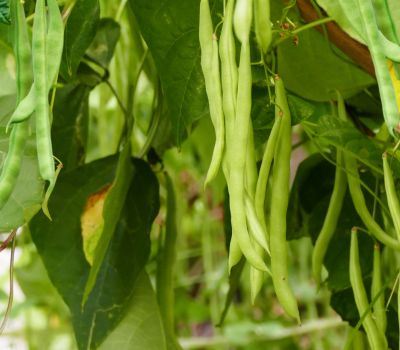
Bush beans, also known as snap beans or string beans, are the most common type of bean grown in home gardens. They grow on compact plants that do not require support and produce pods directly on the stem. This makes them ideal for growing in small spaces or containers. Bush beans can be harvested multiple times throughout the growing season, making them a popular choice for continuous production.
Varieties of Bush Beans
- Green beans: These are the most common variety of bush beans. They have a crisp texture and mild flavor, making them perfect for salads, stir-fries, and snacking.
- Yellow beans: This variety is similar to green beans in taste and texture but has a bright yellow color. They are rich in vitamin A and provide a pop of color to dishes.
- Purple beans: These beans have a unique purple hue when raw, but turn green when cooked. They have a nutty flavor and add visual interest to meals.
Pole Beans
Pole beans, also known as climbing beans, require support as they grow tall and vine-like. They produce pods along the stem and can continue to grow throughout the season if regularly harvested. While they require more space than bush beans, pole beans tend to have a longer harvest period.
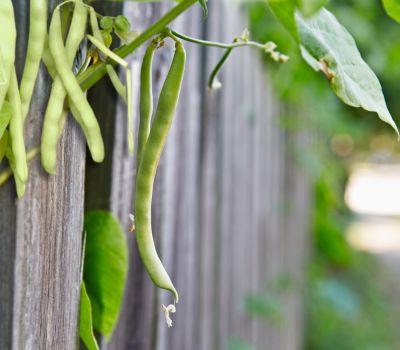
Varieties of Pole Beans
- Romano beans: These are flat, wide beans with a meaty texture and strong bean flavor. They are popular in Italian dishes such as minestrone soup.
- Lima beans: Also known as butter beans, these are large and flat with a buttery texture and rich flavor. They are often used in stews and casseroles.
- Runner beans: These long, slender beans have a slightly sweet taste and are commonly used in Asian stir-fries.
Specialty Beans
There are also specialty varieties of beans that offer unique flavors and appearances.
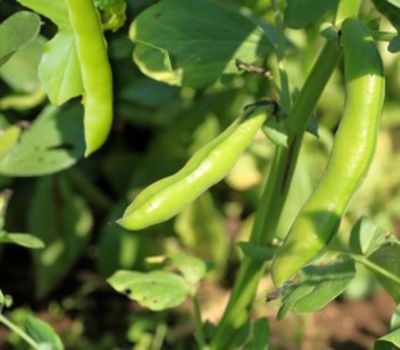
- Fava beans: These large, flat beans (shown in the above picture) have a buttery, meaty flavor. They are commonly used in Mediterranean cuisine.
- Adzuki beans: These small, red beans have a slightly sweet taste and are popular in Asian dishes such as red bean paste desserts.
- Black beans: These small, black beans have a creamy texture and earthy flavor. They are commonly used in Latin American cuisine.
- Chickpeas: Also known as garbanzo beans, these round beans have a nutty flavor and are commonly used in hummus and falafel.
Common Beans
Common beans (Phaseolus vulgaris) are the most widely grown type of bean. They originated in Central and South America and have been cultivated for thousands of years. Common beans have a soft texture when cooked and are popular in dishes such as chili, stews, and soups. The different types of common beans are:
1. Black Beans
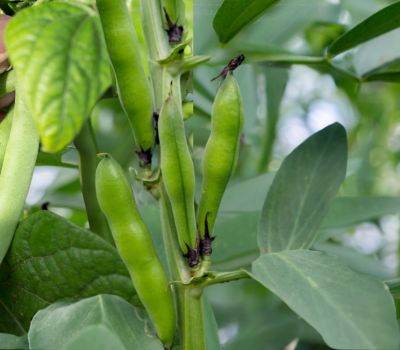
Black beans, also known as turtle beans, are a type of common bean with small black seeds. They have a dense meaty texture and a slightly sweet flavor. Black beans are commonly used in Latin American and Caribbean cuisine, but they are also gaining popularity as a health food due to their high fiber and protein content.
Characteristics
- Small, black seeds
- Meaty texture
- Slightly sweet flavor
Uses
- Commonly used in Latin American and Caribbean cuisine
- Can be boiled, fried, or mashed for various dishes
- Popular as a meat substitute for vegetarians due to their high protein content
Growing Conditions
- Black beans prefer warm temperatures (70-80°F) and well-drained soil.
- They can be grown in both full sun and partial shade.
- Black beans are drought-tolerant but will produce higher yields with regular watering.
2. Pinto Beans
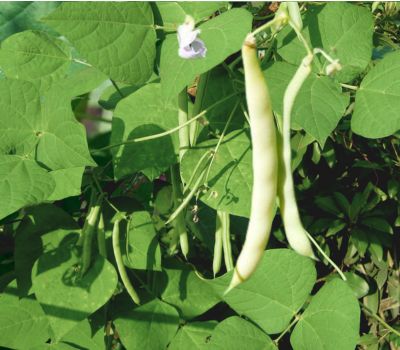
Pinto beans are another type of common bean and are one of the most widely consumed beans in the United States. They have a beige with brown speckled color and a creamy texture when cooked. Pinto beans are commonly used in Mexican cuisine, but they can also be added to soups, stews, and salads.
Characteristics
- Beige with brown speckled color
- Creamy texture when cooked
Uses
- Commonly used in Mexican cuisine
- Can be added to soups, stews, and salads
- Often used as a filling for burritos and tacos
Growing Conditions
- Pinto beans prefer warm temperatures (70-80°F) and well-drained soil.
- They can be grown in both full sun and partial shade.
- Pinto beans are drought-tolerant but will produce higher yields with regular watering.
3. Kidney Beans
Kidney beans are a type of common bean with large, kidney-shaped seeds. They have a creamy texture when cooked and a slightly sweet flavor. Kidney beans are commonly used in chili, soups, and stews, but they can also be eaten in salads or mashed for dips.
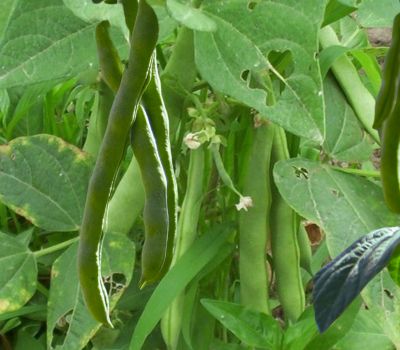
Characteristics
- Large, kidney-shaped seeds
- Creamy texture when cooked
- Slightly sweet flavor
Uses
- Commonly used in chili, soups, and stews
- Can be eaten in salads or mashed for dips
- Often used as a substitute for meat in vegetarian dishes
Growing Conditions
- Kidney beans prefer warm temperatures (70-80°F) and well-drained soil.
- They can be grown in both full sun and partial shade.
- Kidney beans are drought-tolerant but will produce higher yields with regular watering.
4. Navy Beans
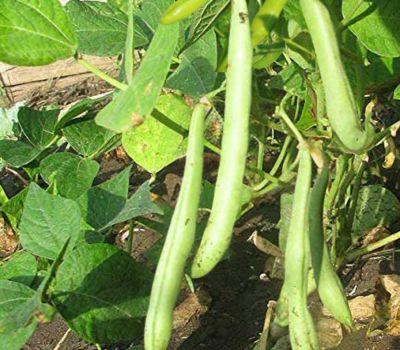
Navy beans are small, oval-shaped beans with a mild flavor and creamy texture when cooked. They are commonly used in baked beans and soups, but they can also be added to salads or blended into dips.
Characteristics
- Small, oval-shaped beans
- Mild flavor
- Creamy texture when cooked
Uses
- Commonly used in baked beans and soups
- Can be added to salads or blended into dips
- Used in traditional dishes such as “Boston baked beans”
Growing Conditions
- Navy beans prefer cool temperatures (60-70°F) and well-drained soil.
- They can be grown in both full sun and partial shade.
- Navy beans are drought-tolerant but will produce higher yields with regular watering.
- They are also sensitive to frost, so it’s best to plant them after the last frost date in your area. Overall, navy beans are relatively easy to grow and can be a great addition to any home garden.
Conclusion
Beans are a versatile and nutritious addition to any meal. Whether you prefer the creamy texture of kidney beans or the mild flavor of navy beans, these legumes offer a variety of uses in cooking. With different growing conditions and preferences, there is sure to be a bean that fits your gardening needs. So why not give one (or all!) of these beans a try in your next gardening venture? Happy planting.
- Everything You Wanted to Know About Red Tamarillos - June 2, 2025
- A Guide to Tulips: Everything You Need to Know & More… - June 2, 2025
- Guanabana: Description, Flavor, Benefits, And Uses - May 27, 2025
